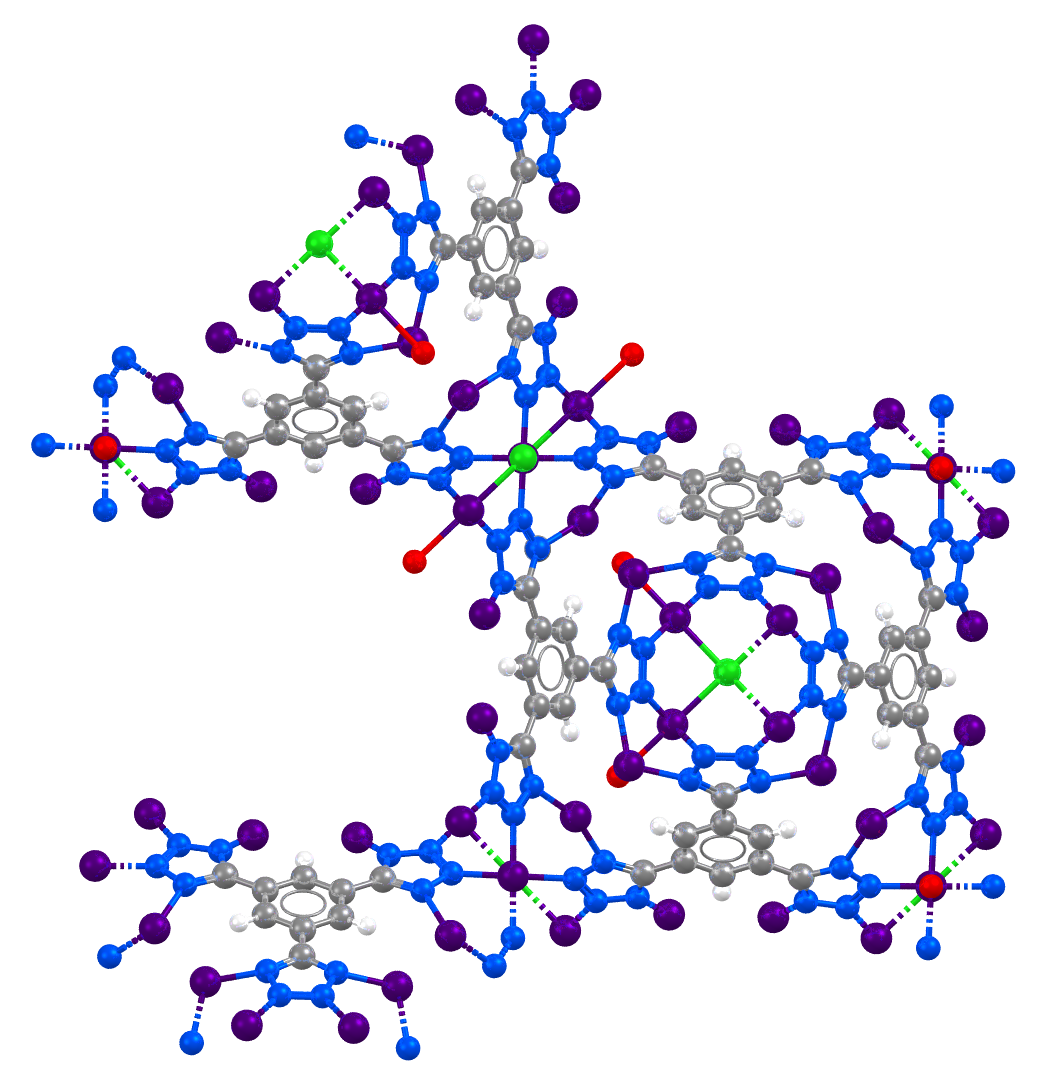Cobalt
Cobalt:

An image of glass coloured with Cobalt. Many ancient cultures used Cobalt to colour glass for jewelry or to add colour to pottery.
Facts about Cobalt:
- Cobalt: Cobalt is a lustrious silvery-blue metal that is naturally magnetic.
- Fun fact about Cobalt: One isotope of cobalt, Cobalt-60, is radioactive and an important source of gamma rays. It is used to treat cancer as a tracer and it is also used for therapy.
- Chemical symbol: Co
- Atomic number: 27
A crystal structure containing Cobalt:

Image showing CSD Entry: AQOLAV, Cobalt atoms shown as violet spheres.
Facts about this structure:
- Formula: 8(C13 H7 N8 3-),13.5(Co 2+),3(Cl –),5.04(O2)
- Structure name: cobalt(ii) (5,5′-[5-(pyrazol-1-id-4-yl)-1,3-phenylene]bis(1,2,3-triazol-1-ide)) chloride dioxygen
- Fun fact about the structure: Metal-organic frameworks have the potential to transform a variety of gas separation and storage process including oxygen purification from air.
- CSD refcode: AQOLAV (What’s this?)
- Associated publication: Dianne J. Xiao, Miguel I. Gonzalez, Lucy E. Darago, Konstantinos D. Vogiatzis, Emmanuel Haldoupis, Laura Gagliardi, Jeffrey R. Long, Journal of the American Chemical Society, 2016, 138, 7161, DOI: 10.1021/jacs.6b03680
More about Cobalt:
In 1730, Georg Brandt started looking into a dark blue ore from local copper companies. He eventually provided information that it contained unrecognized metals. After publishing his findings in 1739, other chemists believed that Brandt’s new element was not something different, but rather a compound of iron and arsenic. However, it was eventually recognised as its own element which we now know of as Cobalt. Cobalt is found to be an essential trace element that forms part of the vitamin B12 active site. As humans, the body contains about one milligram of it. In animals, cobalt salts can be given in small doses to correct mineral deficiencies.
Learn More About the International Year of the Periodic Table (IYPT) in Crystals Project:
This project (#IYPTCrystals) is part of the International Year of the Periodic Table celebration (#IYPT2019), read more about the project here.
You can follow us on social media; search for #IYPTCrystals or follow The CCDC on X @ccdc_cambridge on Facebook ccdc.cambridge, on Instagram ccdc_cambridge or on YouTube CCDCCambridge.
Understand some of the terms and concepts used with our Frequently Asked Questions page here.
A 3D visualization showing Cobalt in real crystal structures: